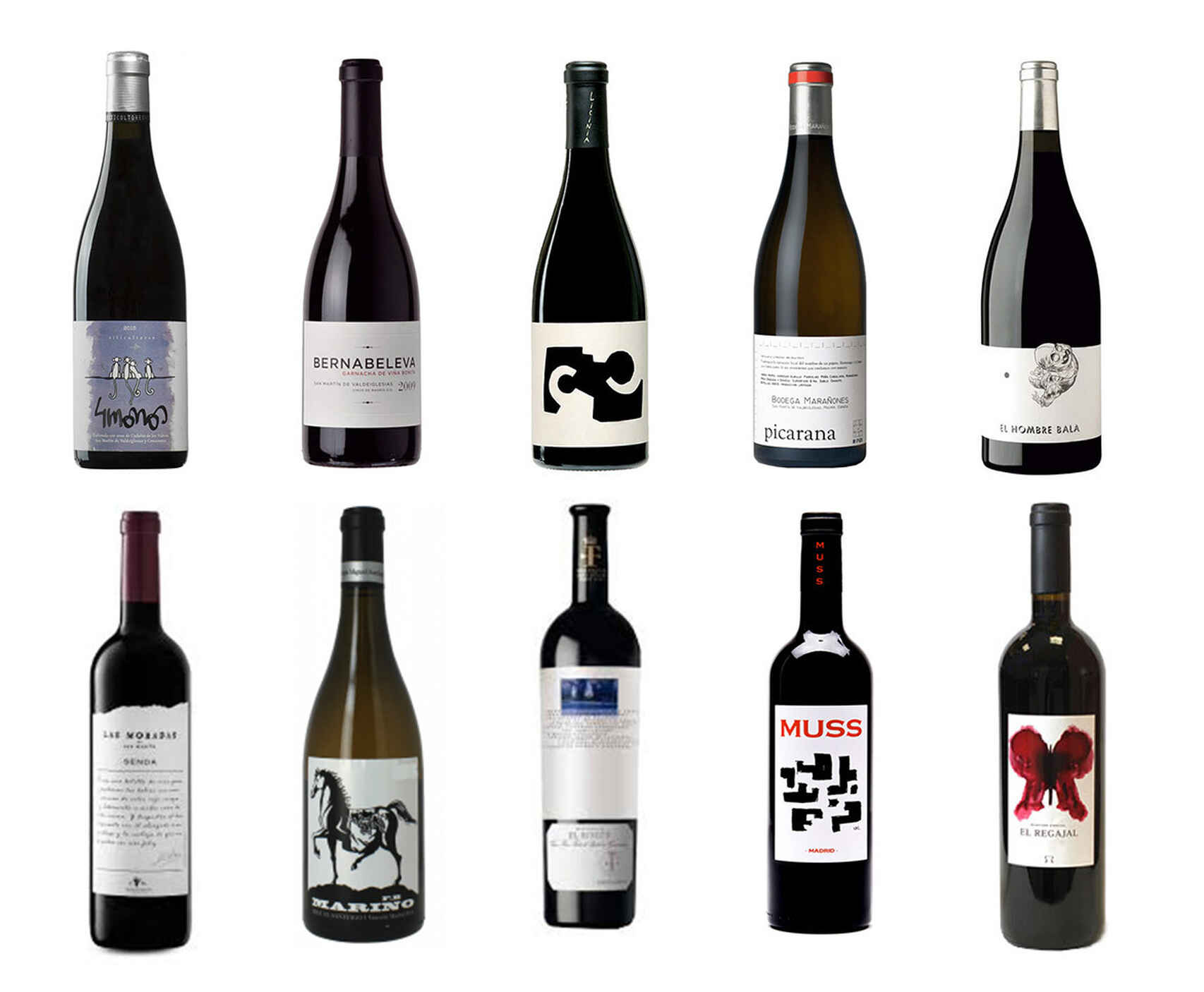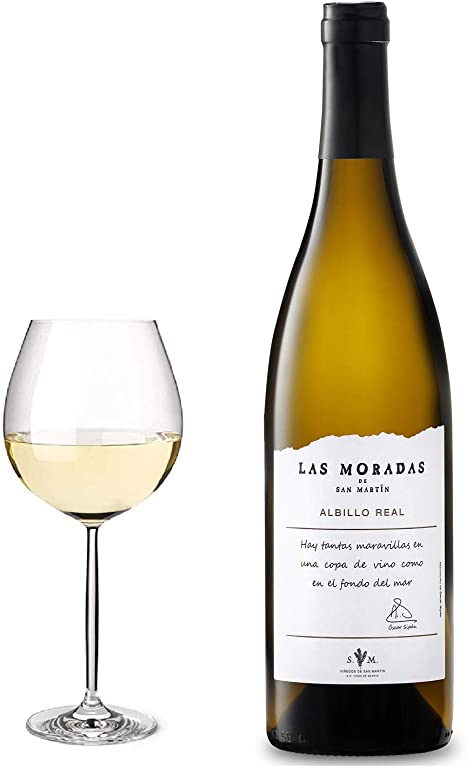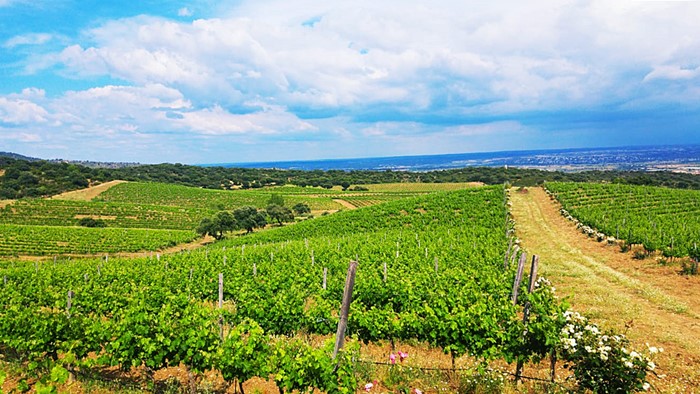
Malvar whites, reds, sparkling rosés and sobremadre, Madrid produces varied and quality wines protected since 1990 by the Denomination of Origin that today groups four subzones: Arganda, Navalcarnero, San Martín de Valdeiglesias and El Molar.
But to know the origin of the wines of Madrid you have to go much further back in time, before the phylloxera and the Civil War ruined a good part of the vineyards. This is the past and present of "Vinos de Madrid", seeking the prestige they deserve.
Relatively dry soils, which do not receive too much rainfall, with a balanced pH, with a moderate richness of nutrients and a good share of sunlight while maintaining high temperatures. These are the essential characteristics that make up good soils for growing vines. And Madrid complies with a good part of these edaphoclimatic conditions.
The Romans, great lovers of wine, did not take long to see that various regions of the Iberian Peninsula, including the central area, offered excellent conditions for growing grapes. Many centuries later, when the Christians repopulated the centre of the peninsula, these vineyards were recovered. Since the 12th century, there is evidence of the presence of vines in the surroundings of Madrid.
During the thirteenth and fourteenth centuries, production was consolidated and the “denomination” Vinos de Tierra de Madrid was taking shape, with special strength from the wines of San Martín de Valdeiglesias, an old antecedent of the current denomination Vinos de Madrid. The appearance of Madrid wines in literature shows us the prestige they had acquired: Jorge Manrique, Francisco de Rojas, Arcipreste de Hita and Cervantes himself celebrate the wines of Madrid in their works.
These are times of tascas, wines and tapas ... and taxes. The municipal authorities establish protectionist measures for indigenous production against imports. Those wines that arrived in Madrid via the Camino de Vinateros had to pay a tax that, they say, helped to erect the Puerta de Alcalá and the Puerta de Toledo.
 But with the arrival of the 20th century, the fortunes of Madrid's wines changed. The terrible phylloxera plague-cause of one of the great Spanish economic crises of the last century-, the Civil War and the real estate pressure of the second half of the century around the capital ruined a good part of the 60,000 hectares of vineyards in the Community. We would have to wait until the decade of the 80s for the wines of Madrid to live their resurgence.
But with the arrival of the 20th century, the fortunes of Madrid's wines changed. The terrible phylloxera plague-cause of one of the great Spanish economic crises of the last century-, the Civil War and the real estate pressure of the second half of the century around the capital ruined a good part of the 60,000 hectares of vineyards in the Community. We would have to wait until the decade of the 80s for the wines of Madrid to live their resurgence.
Nothing escapes marketing and promotion, not even wine. In order for the renaissance of vine growing in Madrid to survive, an entity had to be created to channel the efforts of many young wineries that, since the late 1970s, began to resume the production of wine in small quantities.
In 1984 the Specific Denomination Vinos de Madrid was recognized and six years later the Denomination of Origin Vinos de Madrid was officially recognised, which, like the rest of entities of this type, is in charge of a double task: ensuring compliance with the requirements imposed by the Regulation ensuring the quality of production and developing promotional actions so that the Wines of Madrid rub shoulders with other much more established denominations in our country, in addition to being exported to other markets.
Good wine lovers always carefully review the grapes with which the wines are made as they define their organoleptic qualities. In Madrid, four grapes are mainly grown, with the Garnacha Tinta standing out above all, which represents 75% of the Navalcarnero, San Martín and El Molar vineyards, giving rise to wines with good acidity and high alcohol content.
The one known as Tinto Fino or Tinto Madrid is the Tempranillo grape, one of the classics of Spanish geography and is the majority in Arganda, being a very appropriate grape for barrel ageing.
For its part, the Malvar grape is the Madrid white grape, present in Navalcarnero and Arganda, being the grape with which the famous 'sobremadre' is made, wines that remain with their 'mothers' - dregs and sediments of the grape remain in the bottoms of the barrels. - for half a year, giving rise to organic wines of a singular nature.
Finally, we have the Albilla Real, the white grape from San Martín de Valdeiglesias that occupies a small part of the total production of the Wines of Madrid but is one of its great jewels, producing highly personal wines with high alcohol content.
Despite the efforts of the last decades, the vineyards still do not have it easy in the Community of Madrid. According to official data from the 2020 Wines of Madrid dossier, the Denomination of Origin has just over 8,500 hectares, a third of what it had 40 years ago, and a sixth if we go to the beginning of the 20th century. It is no longer the phylloxera or the warfare: it is the real estate pressure that suffocates the agricultural sector.

However, more than 3000 winegrowers cultivate Madrid vineyards in more than 50 wineries present in the four sub-areas that comprise the Denomination of Origin.
Arganda
Located to the southeast of the Community, it is the largest of all, with 30 municipalities and more than half of the wineries registered in the Denomination of Origin. Its vineyards, which grow on the strongest soils in the region, are located in three orographic units: the meadows of the rivers that cross it —Jarama, Tajo and Tajuña—, terraces and slopes formed by river erosion.
Navalcarnero
The Navalcarnero subzone is located in the centre-south of the region, which includes 19 municipalities and 5 wineries with a total extension that occupies 20% of the vineyard and 15% of the annual production. Belted from north to south by the Guadarrama, Garnacha Tinta and Malvar grow in these vineyards.
San Martin de Valdeiglesias
Our route through the Madrid wineries now takes us to the southwest of the Community, around the town of San Martín de Valdeiglesias where 18 wineries belonging to 9 municipalities are registered. With a quarter of the total production of the Wines of Madrid, it is in this territory where the famous Albillo Real is grown.
The Molar
It is the last sub-area that has joined the Denomination of Origin Vinos de Madrid whose three wineries have been inspired by the late medieval tradition to recover the wine-growing activity of this area located northeast of the capital: the Garnacha ink grape and the Malvar occupy the 600 hectares of this subzone
DISCOVER MADRID WINERIES HERE:
https://vinosdemadrid.es/bodegas-con-do-vinos-de-madrid/